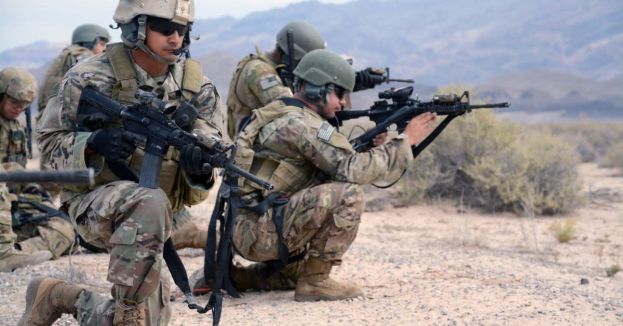While the U.S. military has superior capabilities to the Ukrainian and Russian militaries, the intense fighting in Ukraine has highlighted the value of old technology and the limitations of new hardware. As a result, the U.S. military has been forced to adjust to the challenges it expects to face in future wars. One such adjustment is using low-tech aircraft to overcome high-tech threats, especially for U.S. special operators who may have to operate far from friendly forces in those wars.
In February, a U.S. Army Special Forces team tested a prototype aircraft that could ease the logistical challenges faced by special operations units in contested areas. The Glider Disposable 2000, an unmanned aerial delivery platform designed to resupply special operations forces on the ground, can carry up to 1,500 pounds of gear and fly for more than 15 minutes, depending on the operational environment, according to the firm behind the aircraft, Yates Electrospace. The tests included airdropping a GD-2000 with a 1,000-pound payload from a C-27J cargo plane over the Yuma Proving Grounds in Arizona. On several airdrops, the glider landed within about 100 feet of its intended landing spot, which is pretty accurate for a gliding trunk. Equally importantly, the glider's hull remained intact, and its cargo undamaged.
WATCH: UCLA PROTESTORS LOST THEIR MIND CALLING THE UNIVERSITY A VIOLENT INSTITUTION![]()
June 25, 2023
"If the glider can be launched from an altitude of 40,000 feet, it can travel distances 'in excess of 25 to 30 miles,'" said the Special Forces detachment commander whose team tested the glider. "That's a pretty unique capability and not matched by anything we currently have." The long glide distance equals what special operators can cover during a High Altitude, High Opening free-fall jump. By jumping from that altitude and with oxygen masks, the operators can glide to their target unseen by enemy radar.
WATCH: TRUMP'S ATTORNEY FACING INDICTMENT IN ARIZONA![]()
The U.S. military's resupply operations have mainly been uncontested during Afghanistan, Iraq, and Syria conflicts. However, the war in Ukraine has shown that resupplying ground units in active combat or proximity to enemy forces are not accessible. Aerial resupply is not an option due to the prevalence of anti-aircraft systems, and ground resupply is complicated because opposing forces typically have accurate long-range artillery and rockets.
IS MCDONALD'S BECOMING THE NEW CHAMPION OF AFFORDABILITY?![]()
This dynamic is a preview of what the U.S. would face in a conflict with a capable adversary such as China or Russia, which can still bring an array of anti-aircraft weaponry to bear. Contested logistics has thus become a central focus for U.S. war planners because, despite potent airpower, even the U.S. military will have trouble resupplying its forces in a war with its main adversaries.








 Discover alternative ideas that will make you think
Discover alternative ideas that will make you think Engage in mind bending debate
Engage in mind bending debate Earn points, rise in rank, have fun
Earn points, rise in rank, have fun


